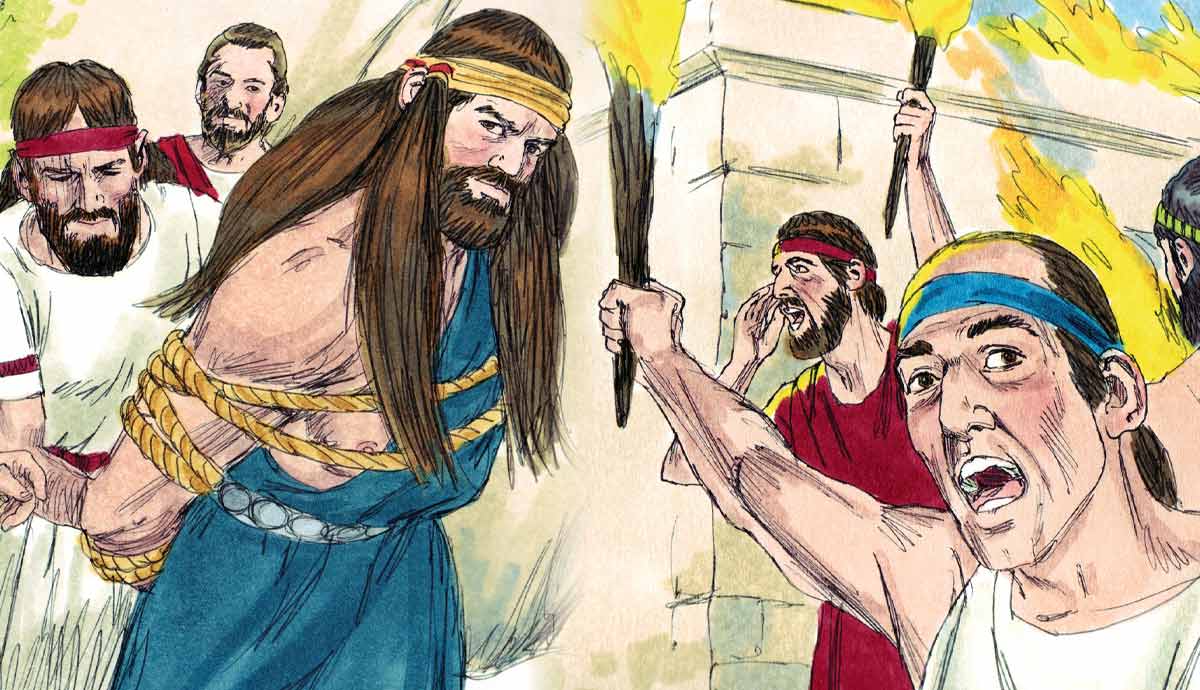
After Solomon’s death, the ancient Kingdom of Israel split into two realms. The northern half was called Israel and the southern Judah. At different times in the period that followed, known as the Divided Kingdom, three boys under thirteen-years-old—Joash, Manasseh, and Josiah—were crowned king. While Joash and Josiah are celebrated for their efforts to centralize Israelite worship in the Temple at Jerusalem, Manasseh is remembered as a reformer in the opposite direction, actively promoting what the biblical narrators see as perverse religious practices.
Who Was Joash?

In the seventh chapter of II Samuel, David receives a divine promise that his kingly line would never end, but no parallel promise is given to any northern king.
When Joash, son of Ahaziah King of Judah, was a baby, his grandmother Athaliah, a princess from the North, commanded the murder of everyone in the Judahite royal family. Joash was saved from the slaughter by a relative named Jehosheba, thereby becoming the only surviving male in David’s line.

After keeping Joash in hiding for six years, the Temple priest Jehoiada publicly anointed a seven-year-old Joash king and commanded Athaliah’s execution. Under Jehoiada’s mentorship, Joash reigned in such a way that prioritized the Temple cult. He is remembered primarily for renovating the Temple, which had come into disrepair.
Mysteriously, despite Joash’s apparent prowess as a ruler under Jehoiada’s guidance, his life ended violently. Without revealing a motive, the text says that two of his servants killed him. He was replaced by his son Amaziah.
Who Was Manasseh?

Manasseh, who began to reign at twelve-years-old, became one of the most despised kings in biblical story. This surprises the reader, since the opposite would have to be said of his father Hezekiah. Manasseh was Judah’s longest-ruling king, yet the account of his life in the text is short.
Hezekiah had survived an Assyrian siege of Jerusalem, and Manasseh inherited a kingdom that was surrounded by Assyria’s closing grip. Perhaps out of desperation, he seems to have thought that his people’s return to more primitive religious practices would galvanize his realm and invoke the help of deities who might keep the Assyrians further at bay than his father’s god had done.
Whatever his motivation, Manasseh is portrayed as a desperately cruel king. He sacrificed his own son, and actively promoted other religious practices condemned by the narrator of the story. He also freely shed Judahite blood if it served his interests.
Who Was Josiah?

In the book of I Kings, a prophet foretells the future birth of a king named Josiah who would purge Israel of heretical religion—specifically, the offering of sacrifices in places outside the Temple. Josiah would, the prophet said, offer the bones of priests who engaged in such rites on their own spurious altars.

Josiah appears later in the twenty-second chapter of II Kings. Crowned at age eight, he later embarks on a comprehensive reform program that focused on consolidating worship in the Temple and removing the “high places” where unauthorized rites were performed.

These reforms were spurred by the discovery of a document called the “Book of the Law” in the Temple by a priest named Hilkiah. The story presents Josiah as inaugurating a kind of renaissance—the rebirth of Israel’s ancient ideas and religion, even restoring the Passover as a national holiday. Like Joash, this boy king’s priorities also seem to have been influenced by priestly concerns.










